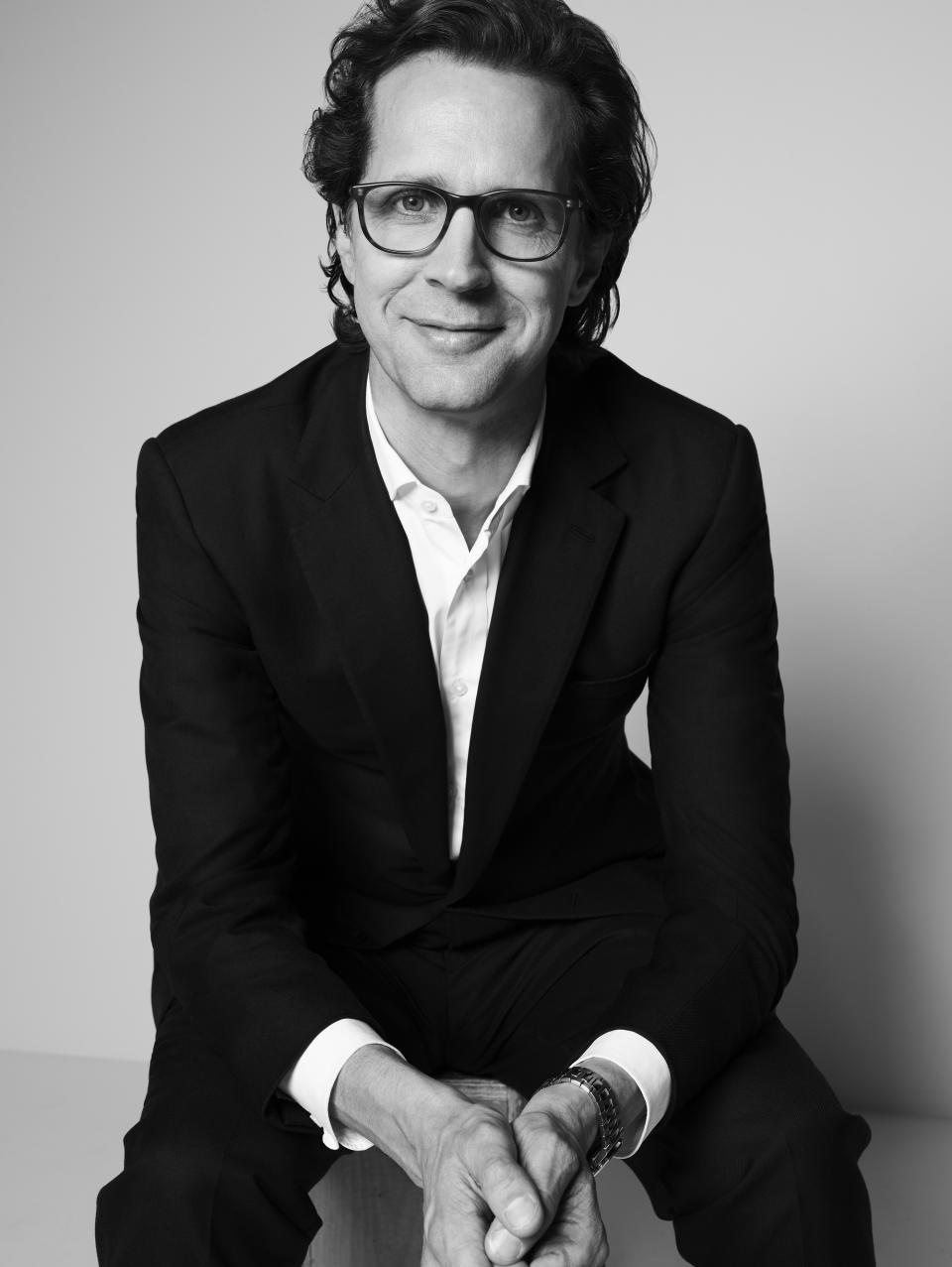CEO Stefan Larsson Points to Strategy as PVH Tops Q4 Earnings Estimates

The pieces of Stefan Larsson’s plan are coming together for PVH Corp.
The chief executive officer has a big fourth quarter to point to as proof, with signs of strength from both Calvin Klein and Tommy Hilfiger.
More from WWD
Tommy Hilfiger Puts Fashion, Art, Music, Entertainment and Sports at the Heart of the Brand
BCI Renews Camuto License as Ariel Chaus and Manny Chirico Mull Deals
“We delivered the strongest fourth quarter in the history of the company,” Larsson crowed in an interview with WWD. “All-time high earnings per share, over 50 percent higher than last year.”
But not everything is easy — and investors signaled strongly that they wanted more out of the company’s outlook and sent shares of PVH down 19.3 percent to $112.75 in after-hours trading on Monday. The company’s sales have been hit by more cautious consumers and Europe is expected to be a weak spot this year.
Still, PVH has fundamentally changed.
Larsson described it as an evolution from a “legacy brand acquirer to a leading brand builder” and said that bringing new brands on board is not in the plan for the new PVH.
“This is the focus and it’s working and we’re going to be very consistent,” Larsson said of his brand-building approach.

Fourth-quarter net income nearly doubled to $271.8 million from $138.7 million a year earlier. Adjusted earnings per share rose 56 percent to $3.72 — well ahead of the $3.53 analysts projected, according to Yahoo Finance.
The top line was tougher.
Revenues for the quarter ended Feb. 4 came in at $2.5 billion, flat on a net basis and down 1 percent in constant currencies. But that was better than the 3 percent to 4 percent decline the company projected in November — a forecast that gave the market a brief pause at the time.
Tommy Hilfiger revenues slipped 1 percent in constant currencies with a 4 percent gain in North America. Meanwhile, Calvin Klein showed a 3 percent increase overall despite an 8 percent decline in North America that was driven by a decrease in the wholesale business.
Larsson became CEO of PVH in 2021 and has been remaking the company with his PVH+ plan for two full years now.
The idea is to build up the brands with big marketing moments while focusing on key “hero” products tied to the brand’s core and delivering with a data-savvy and demand-driven supply chain.
“We’re two years in and we’re still just at the very beginning,” Larsson said.
The marketing and the product sides are starting to connect with the supply chain, which cut fourth-quarter inventory by 21 percent compared with a year earlier with “better stock freshness” coming into spring.
That kind of back-end discipline and planning helped boost the company’s bottom line while sales were weighed down by a tougher consumer climate.
Larsson said the Calvin and Tommy brands were both getting more support with the company’s global marketing spend increasing to 6 percent of sales last year, up from about 5 percent in 2022.
That included Calvin’s campaign with Jeremy Allen White that was everywhere — “I don’t know if you were able to miss it,” said Larsson — and helped boost the brand’s underwear sales by 30 percent in its first week.
“Calvin had a record engagement coming out of 2023 and had the biggest cut-through campaign of any fashion brand starting this year,” he said.

Meanwhile, Tommy came back to New York Fashion Week, where Larsson contended the brand had “the most talked-about fashion show in New York” and was the only non-luxury brand to be among the top-10 talked about shows globally.
“Each brand has a unique DNA,” Larsson said. “Our job is to go back to the DNA of both Calvin and Tommy and make that relevant for today in product.
“We never start product creation by cutting [stock keeping units],” he said. “We start by making the most important skus … and then we buy a lot of efficiency by building a global strategy in assortment that has a lot of increasing continuity across the globe.”
The brands are not designing, say, shirts for each region, but making one strong assortment that can go global, with less work.
At its best, it’s an approach that provides both marketing punch and back-end slickness.
But it doesn’t solve all ills.
Europe, for instance, has become a tough spot.
“We have seen the macro consumer backdrop become more challenging, especially in two of our biggest countries, Germany and the U.K.,” Larsson said. “Midyear, we will cut all third-party sales of our brands on digital platforms [in Europe]. We are proactively sacrificing short-term sales for brand-accretive growth.”
At the same time, he said the brands are leaning in and working closer with the company’s best wholesale accounts in the region.
That and the marco backdrop generally sets up 2024 with some challenges to start and another chance for PVH+ plan to prove itself.
This year, PVH is expected to grow earnings per share to a range of $10.75 to $11, up slightly from adjusted earnings of $10.68 last year. Analysts were expecting earnings to ramp up quicker and had $12.08 penciled in for this year, according to Yahoo Finance, contributing to their pushing down shares so sharply in after-hours trading.
Revenues are slated to fall by 6 percent to 7 percent — which includes a 2 percent cut from the sale of the company’s Heritage Brands women’s intimates business and a 1 percent hit from the extra week in last year’s fiscal calendar.
Best of WWD


